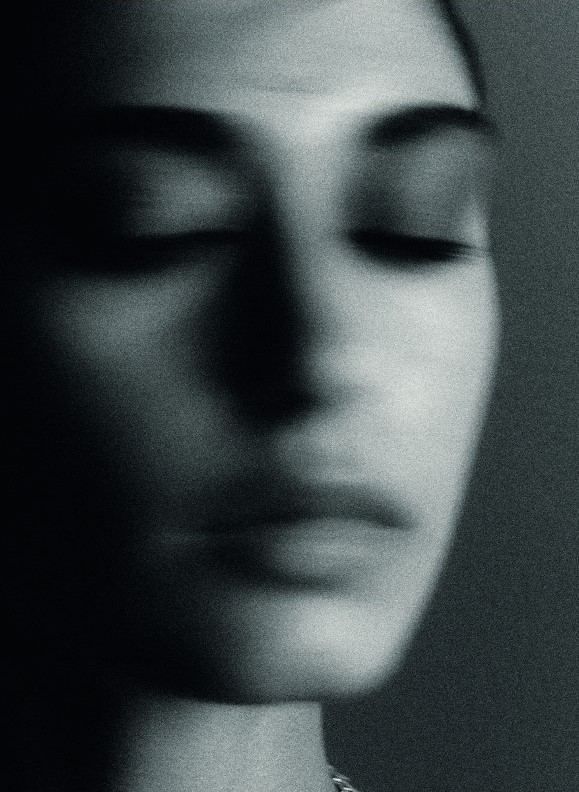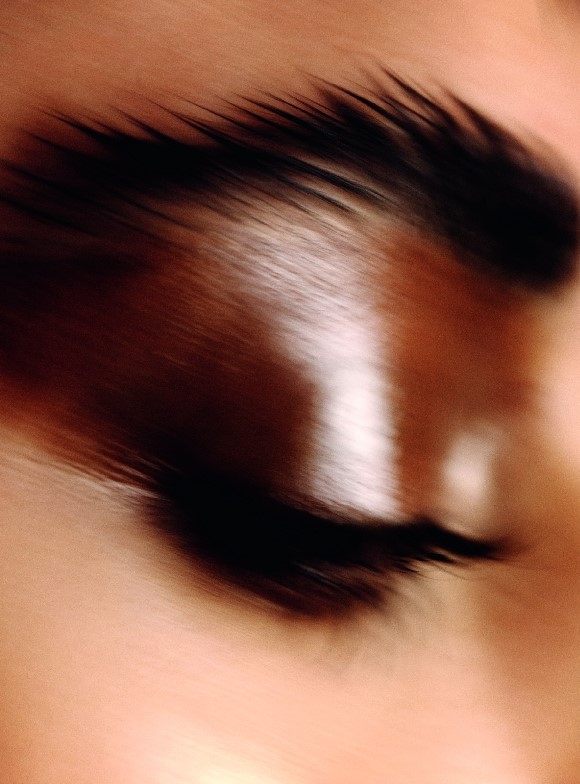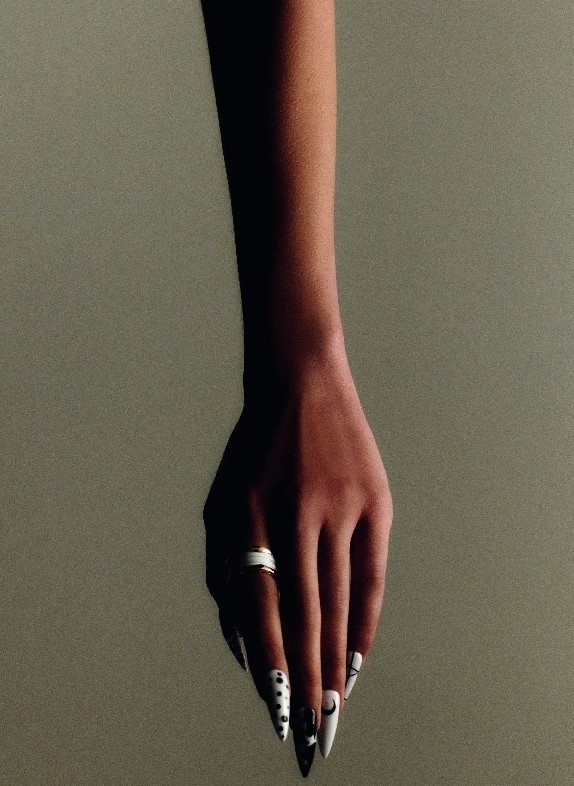Filled with fresh hope and ready to step into an uncharted future, we’re embracing our collective exploration of the audacious, while armed with an appreciation for the rituals that offered a little solace during times of great ambiguity. The overtures of a bold new beginning in beauty have officially begun – and with a clash of pop culture, skin confidence and colour beckon. It’s time to let the music play.
SKIN HEALTH GETS HOLISTIC
While topical skincare sales skyrocketed during the pandemic, we’re now set to shift our focus to skin health in symbiosis with an inside-out approach. Ingestible beauty brands, such as Vida Glow and JS Health, are beginning to create skincare products that work in tandem with an established range of supplements, for a one-two punch at both the dermal and subdermal level.
But for others, such as the industry-revered Augustinus Bader, introducing supplements as part of its skincare offering – more specifically, The SKIN Supplement – was never an afterthought. Professor Augustinus Bader, the man behind the brand, took his research career in the field of stem cell biology to create a disruptive scientific concept that translates as tech, rather than a cosmetics company.
“Augustinus Bader is a technology platform that leverages our disruptive skincare discovery about cellular communication. We believe we aren’t a skincare company moving into supplements but a tech platform with multiple application opportunities,” says Professor Bader. “[Our products support] the skin’s ability to regenerate itself – protection and care from the inside out; however the formulas are completely different. This is because the application and physiological interaction require an entirely different set of ingredients.”
The SKIN Supplement is powered by ERC8, which Professor Bader claims can provide targeted cellular nutrition, create a healthy gut microbiome, and support the body’s natural ability to recycle and rebuild damaged mitochondria – which is “the power generator of living cells, for more efficient cell functioning and skin renewal,” he says. “Our ingestible skincare delivers cellular nutrition and targets the signs of ageing and damage while supporting skin metabolism and regeneration from within.”
Topically, the brand will next address a complexion concern that has been reportedly rising in recent years – sensitive skin – with the Ultimate Soothing Cream, a formula designed specifically to address the root causes of dryness and inflammation. Statistics show that self-diagnosed sensitive skin sufferers have increased, which Professor Bader attributes to the continual wearing of masks during the pandemic – creating a warm, humid chamber that appears awfully inviting to bacteria, causing inflammation or acne.
“Our soothing formula nourishes skin with a unique blend of natural powerhouse ingredients in combination with patented TFC8,” he explains of the brand’s latest innovation. “Offering immediate, long-lasting relief for even acute cases of irritation and inflammation, it also boosts and retains moisture and deep hydration, reduces fine lines and wrinkles and improves firmness, elasticity and tone.”
Augustinus Bader’s brand philosophy is that health is the biggest asset we have, and taking a holistic approach to our skin ensures our entire wellbeing is in balance – which in turn keeps our skin in check. “Healthy skin means a status of physiological harmony of a biological system,” Professor Bader says. “In this condition, everything functions to the best of its innate capacity. Keeping your skin healthy will give you an abundance of protection.”

FERMENTATION IN FOCUS
Our skincare products are set to become even more powerful with the increasing industry interest in fermentation – a transformative process that breaks down and subsequently boosts natural compounds ingredients to enhance their nutrients and yield skin-friendly probiotics.
“It is a process in which an agent causes the decomposition of plant raw materials into simpler substances to obtain valuable active ingredients,” explains Virginie Couturaud, Scientific Communication Director for Parfums Christian Dior. “This helps to boost its abilities, multiply its benefits for the skin and make it bioavailable and therefore more easily assimilated [by the skin].”
But before you go getting confused, fermentation is different from the probiotics we discussed earlier. According to Couturaud, “Fermentation will use microorganisms in the form of bacteria, yeasts or moulds to begin its transformation process while the probiotic is directly the microorganism that is used as an active ingredient.”
Dior’s labs have developed their own exclusive Longoza-Ferments blend that possess the ability of multifermentation. “This new multifermentation [means that] different ferments act at the same time on our Longoza extract. A set of 10 Phyto ferments during 10 days at 26°C allowed us to obtain an extract with more active principles, since all the yeasts work together,” reveals Couturaud. The method is also said to be more sustainable, as the stable micro-organism consortia produce low levels of waste and energy consumption.”
Dior harnessed this game-changing technology for its new Capture Totale Intensive Essence Lotion. “The advantage of our multifermented Longoza is that instead of obtaining a single active ingredient, we obtain several to act at different levels in the skin – since all the yeasts work together with a well-defined temperature and duration,” Couturaud elaborates.
As conversations continue about the importance of maintaining a strong skin barrier, Dior’s scientific efforts has resulted in a lotion that supports the natural culture of the skin by targeting five of the proteins that are essential for skin’s health. Research demonstrated that after cleansing, the use of the Capture Totale Intensive Essence Lotion not only delivered hydration, but also supported the skin for optimal renewal and functionality – with proteins increased by up to 134 percent.
Former co-founder of REN Skincare, Rob Calcroft, chose to include fermented probiotic bacteria in his microbiome focused skincare brand, Cultured. Known as postbiotics, Calcroft praises their ability to positively influence our skin barrier. “[Postbiotics] do remarkable things in remarkable new ways. In our Biome One Serum, we use a postbiotic lactococcus ferment which stimulates epidermal growth and accelerates skin self-renewal,” he enthuses.
“It increases the production of the key proteins and enzymes vital to skin quality, improving skin barrier function and cell cohesion. It also promotes a healthy microbiome by supporting microbial diversity and richness, safeguarding the skin’s vital ecosystem – it basically delivers a retinol-like effect but in a skin-friendly way.”
THE MICROBIOME AS A MAIN CHARACTER
Discussions around the microbiome have never been more prevalent. Call it an extension of our obsession with the gut-skin connection, or simply a symptom of those 10-step nightly regimens our skin endured during the pandemic – we’ve never been more aware that it’s easy for your skin to fall out of balance.
Keeping the microbiome in equilibrium is said to be crucial to maintaining healthy skin in the long term, but it’s only recently that we’ve started to recognise the microbiome as a main character when it comes to our complexion. That being said, there’s still a lot of confusion – such as what exactly is the microbiome, and what role does it really play when it comes to our skin?
“The microbiome refers to organisms that are contained in microscopic bacterial ecosystems known as microbiota. These microbial organisms affect nearly every human bodily process including ageing, digestion, the immune system, and even your mental health, and of course the skin,” says Dr. Roshini Raj, a board-certified practicing gastroenterologist and the founder of TULA Skincare.
“A balanced microbiome is the key to healthy skin, and probiotic extracts – as well as prebiotics – can help maintain the natural balance of your skin microbiome. When the microbiome is balanced, the skin is balanced, nourished and soothed,” she continues, adding that it can also positively impact your digestion, ageing, the immune system, even your mental health.
Working as a practising gastroenterologist – and studying gut health and probiotics – for more than 20 years, Dr Raj created TULA Skincare. Like the Sanskrit word from which the brand takes its name, TULA focuses on balancing the microbiome with a skincare range to suit all skin types. “I was inspired to start TULA after noticing how much better my patients looked and felt after a course of probiotic treatment. Often their skin was calmer and clearer and I could tell they were feeling better before they had the chance to tell me,” she recalls. “I began to research the topical benefits of probiotic extracts and after finding research shows probiotic extracts have a proven ability to soothe and calm skin inflammation, TULA was born.”
As a fellow microbiome-led brand, Cultured also focuses heavily on ensuring a clear, glowing complexion. “Your microbiome acts as a biological shield for your skin and is integral to – and part of – a strong skin barrier. It produces molecules vital for skin health and defence,” says Calcroft. “It also acts as a messenger that regulates skin response and healthy skin function from wound healing to UV protection. Lastly, it communicates with your whole body’s immune system.”
In fact, your microbiome might be compromised without you even knowing it. As Calcroft explains, a neglected microbiome may actually be behind a number of common skin woes. “A compromised, unhappy microbiome – known as dysbiosis – is associated with so many of the major skin problems we see today and is implicated in the alarming rise in skin sensitivity, chronic dryness, breakouts, rosacea, acne and premature skin ageing.”
He decided to create a range of ‘Biomecare’ products that centre on the skin’s relationship to microbes and bacteria, with pre and post-biotics at its core. “Pre-biotics are important as they ‘feed’ the microbiome and keep it healthy. They can also have amazing effects from acting as counter-preservatives to mitigating skin inflammation and breakouts,” says Calcoft.
While Cultured focuses on pre and post-biotics, TULA champions probiotics in its formulas. “Probiotic extracts are clinically proven to soothe, nourish, and calm skin inflammation as well as balance the microbiome,” explains Dr. Raj. “People with all types of skin – including sensitive, dry, oily or acne-prone – are likely to see improvements in their complexion by introducing probiotics, either topically with skincare or internally with supplements (ideally both!) into their regimen.”
Calcroft believes our collective recalibration on skin health as it pertains to the microbiome will usher in a revolution in the way we look after it. “We are mini rainforests of constant processes, interactions and happenings with this vast array of microbes
that live with us. Not just a piece of inert skin that you can scrub, bash and pour acid on to make it look good,” he says with a laugh.
“It’s a revolution that is so scientifically sound it will influence skincare forever. And it’s only just beginning. There’s still lots we don’t know and we are still in the dark about the details of how it works,” Calcroft continues, adding, “But we know enough to know that it matters… a lot.”

MAKEUP’S NEW MOOD
Makeup took a bit of a backseat as we cycled through the many seasons of the pandemic, from the early days where application was rare and skincare reigned supreme, to the minimalistic approach we adopted when restrictions began to ease. But now that we’re seeing a return to some semblance of normality, it seems our makeup (along with the rest of our lives) has been forever changed by the past two years.
“The early months into the pandemic, with all the lockdowns and stay-at-home mandates, presented the much-needed time to reflect inwards and really look at our very busy lifestyles,” says Uzo, NARS Cosmetics’ mononymous (and legendary) Global Director of Artistry. “For most of us, we were given that rare opportunity to re-examine our skincare routines and play with makeup, and as a result, we’ve seen a renewed emphasis on all things wellness, holistic skincare and natural glamour.”
Beauty’s current mood appears to be a mash-up of our renewed optimism towards the next era, coupled with the rituals and discoveries that gave us respite and comfort during global uncertainty. Uzo continues, “We have now adapted to this ‘new normal’ and no longer let it dictate our lives but instead, we want to focus on feeling good and looking good.”
The result? Uzo describes our current makeup mood as “the return to subtle glamour. There is a renaissance-like feel in the air, and we are definitely taking cues from the decades past, from glammed-up eye makeup to bold lip looks.” Call it the Euphoria effect, but Uzo describes the next big trends as “naturally glowing ‘lit-from-within’ skin, glossed lips, graphic eyeliner in bolder colours, and radiant cheeks.”
We’re now rejecting the old Instagram aesthetic that favoured powder formulas and heavy contouring for what could arguably be considered some serious colour therapy – inspired by the cosmetic opulence of decades past. “There was something about the ’90s’-era makeup that seems so refreshing right now and seems to be the obvious alternative to years of Instagram-inspired beauty trends,” notes Uzo. “Eye makeup has become less sculpted, and skin looks more natural without exaggerated highlighting and contouring. We’ve also seen the reintroduction of Y2K-inspired nude lips with a defined lipliner.”
She recommends focusing on making bolder eye statements with liner colours such as cobalt blue, white or burgundy, alongside a softer, more natural-looking base. While the ’90s supermodels opted for a matte finish, Uzo predicts our post-pandemic outlook on our skin will temper the revival of full-coverage formulas.
“We’re going to land somewhere in the middle – not too sheer and not full coverage. Skin will look polished and perfected with natural dimension and transparency, with foundations that offer medium and buildable coverage but still leave skin looking glowing,” she says, naming NARS’ new Light Reflecting Foundation as an example of the happy medium. “It’s the perfect makeup-skincare hybrid foundation that makes skin look ‘lit-from-within’ with a natural finish.
BROW DOWN
With the current Y2K obsession in full swing, questions – and eyebrows – have been raised over the predicted emaciation of our arches. After eyebrow grooming officially reached its peak a few years back by way of leave-in treatments and shaping stencils, we’ve since taken a more laid-back approach to our brows. So does that signal our subsequent return to the pin-thin eyebrows we plucked into oblivion in the early Noughties?
No, according to Uzo – at least, not entirely. “Eyebrows will never be over, as they are that one beauty feature that really shapes the overall look of the face,” she states. “However, I do believe that brows are moving in a direction of softer grooming that will take into consideration their natural density and shape. As much as I love a full eyebrow, I think overfilled, almost boyish-like eyebrows are neither trendy nor look great on everyone.”
Instead, our arches will continue towards the ‘skinification’ that’s previously seen us invest in brow masks and growth serums. “Eyebrows will still be perfected and defined but without being overly feathered or brushed upwards,” says Uzo. “New generation brow serums leave brows conditioned and healthy, and pomades that add fullness will continue to be staples alongside pencils and brow gels.”

NOUVEAUX NAILS
Every season someone inevitably predicts the end of nail art, but is subsequently proven wrong – particularly, as it seems, post-pandemic. In reality, our appetite for donning detailed designs on our digits appears to have been stoked during all those months without access to a fresh manicure, as inspiration abounds in the likes of Euphoria.
Here we see stylish characters like Maddy Perez, Kat Hernandez and Cassie Howard switch out intricate, highly decorated designs on long nails with eye-watering speed, prompting copycat content on social media within hours of the latest episode airing. But the woman responsible, lead nail artist Natalie Minerva, believes this trend isn’t beholden to a moment in time.
“Nail art will never die, and I stand by that statement. I think design just ebbs and flows between crazy, complicated, and colourful to clean, simple, and minimal,” she insists. “I think it would be strange to see nail art just disappear because people love how it makes them feel. It’s an extension of who we are and what we represent. Why would we stop something that makes us feel good?”
Feeling good is a recurring theme post-lockdown, and Minerva believes that our rediscovered love for nail art is a manifestation of those periods. “People needed as much happiness as they could get after Covid. We went through a collective trauma whether we want to admit it or not, so having a little joy on our nails makes us feel hopeful,” she explains.
This shift towards the expressive has been reflected in the nail design requests that Minerva has received from her clients – both on the set of Euphoria and pre-red carpet with her celebrity clientele. “I’ve been doing either super colourful, bright nails, or totally dark, goth inspired nails – there’s been zero in between!” she says. “I kind of love the juxtaposition. It feels polarising and I’m really into it.”
Minerva anticipates beauty’s adventurous mood will continue in the coming seasons. “Nails are on an upward spiral to being as creative as possible. Nail artists aren’t afraid to get weird and I think it’s awesome to see because I really haven’t seen nails go this route yet,” she says. “People are so ready to live their lives with no hesitations or fear post-Covid, and nails are following suit. You have one life to live, so you should live it exactly how you want to – and wear nail art that just simply makes you happy!”
This essay is published in the third edition of GRAZIA Middle East. Click here to discover more from THE JOURNEY.









